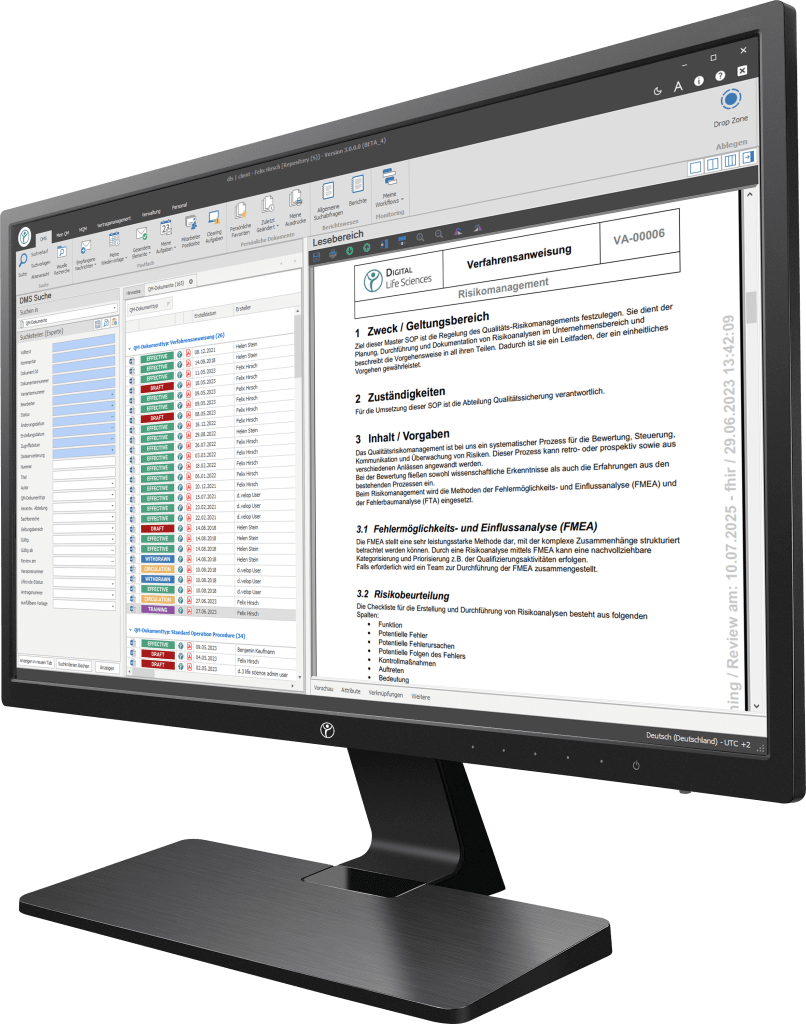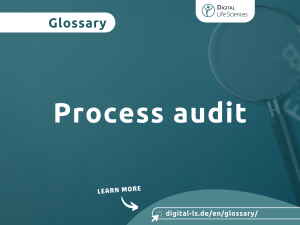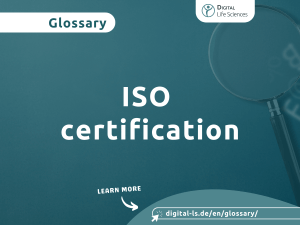Definition of the term ("What is an eDMS?")
An electronic document management system, abbreviated eDMS, is a software solution for storing, organising, retrieving and managing electronic documents and images. It provides a central repository for documents, allowing authorised users easy access to them while ensuring security and compliance.
The development of document management
Before we get into the specifics of eDMS, let’s take a moment to understand the evolution of document management.
- Traditional paper-based systems: In the past, organisations relied heavily on physical documents, filing cabinets, and archives. This method was not only cumbersome, but also prone to errors, misplacement and damage.
- The digital transformation: With the advent of computers and the internet, document management began to shift to digital formats. However, the first digital systems were not as sophisticated and secure as we are today.
How does an eDMS work?
An eDMS works according to a simple but effective principle: It digitises, organises and protects documents. Here’s a step-by-step breakdown of how it works:
- Document scanning: The process begins with scanning physical documents into digital formats such as PDFs or images. Modern scanning technology ensures high-quality digitisation.
- Indexing and metadata: Each document is assigned metadata, including keywords, dates and author information. This simplifies the later search and retrieval of documents.
- Centralised storage: All digitised documents are stored in a central repository, often hosted in the cloud or on local servers.
- Access control: With an eDMS, administrators can define user roles and permissions, ensuring that sensitive information is accessible only to authorised personnel.
- Retrieve documents: Users can quickly search for and retrieve documents based on keywords or specific criteria. This increases productivity and reduces the time spent on manual searches.
Your path to digitisation - Discover our software
Our digitisation solutions primarily address document-based processes in manufacturing, production and quality management. The basis of the dls | eQMS is a holistic ECM/DMS system. The ECM/DMS system can be connected to your existing ERP system (e.g. SAP) and thus map almost all document-based processes in the company.

What are the advantages of an eDMS?
The introduction of an eDMS offers companies a wide range of benefits:
- Increased efficiency: An eDMS streamlines document retrieval and reduces the need for physical storage, saving time and resources.
- Improved collaboration: Teams can collaborate on documents in real time, even when working remotely, improving communication.
- Enhanced security: Documents are protected by encryption, access controls, and audit trails, reducing the risk of data breaches.
- Regulatory Compliance: eDMS systems often have compliance features that help organisations comply with industry regulations and standards.
The future of document management
As technology advances, an eDMS will play an even more significant role in document management. Artificial intelligence (AI) and machine learning (ML) are integrated to automate document classification and further improve search capabilities.
Conclusion
An eDMS has changed the way organisations manage their documents. It has ushered in an era of efficiency, collaboration and security. As businesses continue to drive digital transformation, an eDMS will undoubtedly remain a cornerstone of modern document management.
Start your digital transformation with our powerful, modular software solutions
Frequently Asked Questions (FAQs)
Is an eDMS suitable for small businesses?
Absolutely! An eDMS can benefit businesses of all sizes by improving organisation and access to documents.
Are eDMS systems safe from cyber threats?
Most eDMS systems have robust security features, including encryption and access control, to protect documents from cyber threats.
Can eDMS systems be integrated with any other software?
Yes, eDMS systems can often integrate with other enterprise software such as CRM and ERP systems to provide seamless data management.
What are the costs of implementing an eDMS system?
Costs vary depending on the size of the company and its specific requirements. It’s best to get quotes from eDMS vendors to get accurate pricing.
How long does it take to implement eDMS?
The timeframe for implementation can vary, but usually ranges from a few weeks to a few months, depending on the complexity of the project.


